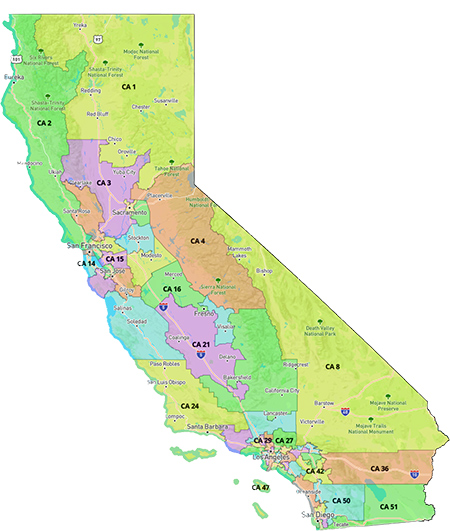By Jim Ellis — Friday, Dec. 1, 2023
President
Vivek Ramaswamy: Key Aide Switches to Trump — It appears Vivek Ramaswamy’s presidential campaign may have already peaked. The campaign’s political director, Brian Swensen, is departing the Ramaswamy camp in order to join former President Donald Trump’s campaign as a strategic consultant. Along with the departures of former Vice President Mike Pence, Sen. Tim Scott, former Congressman Will Hurd, and commentator Larry Elder, it appears the Republican presidential campaign’s winnowing process is well underway.While former UN Ambassador Nikki Haley and ex-New Jersey Gov. Chris Christie seem to be gaining slight momentum in at least some of the early states, Gov. Ron DeSantis and Ramaswamy either remain stagnant or are starting to descend. All indications maintain that the nomination still appears as Trump’s to lose.
House
CA-25: Rep. Ruiz Draws Potential Year-Long Democratic Challenger — As the Dec. 8 California candidate filing deadline draws near, we see political moves being made across the state. Indio Mayor Oscar Ortiz (D) on Wednesday announced a challenge to six-term US Rep. Raul Ruiz (D-Indio). Ortiz’s entry into the race could mean that this competition will last all the way through the general election. Under California’s all-party top-two qualifying system, two members of the same party can advance into the general election.
California’s 25th District occupies the far southeastern sector of the state and touches the Mexican border. The seat includes Imperial County and parts of Riverside and San Bernardino Counties. The FiveThirtyEight data organization rates the district as D+12, and the Daily Kos Elections site ranks CA-25 as the 64th-most vulnerable Democratic seat in the party conference. Considering the announced Republican candidates appear weak, seeing a double-Democratic general election from this district is a distinct possibility.
NY-17: Ex-Rep. Jones Gets Clear Shot — Former one-term Congressman Mondaire Jones (D), who left the Rockland/Westchester County district to unsuccessfully seek re-election in New York City, has returned to upstate New York to again run for Congress. It now appears that he will have a clear shot to again become the Democratic standard bearer.
Former local school board member Liz Gereghty (D), the sister of Michigan Gov. Gretchen Whitmer (D), announced Wednesday that she will leave the campaign trail. The Gereghty move all but assures that Jones will return to oppose GOP freshman Rep. Mike Lawler (R-Pearl River) in one of the nation’s top challenger races.
NY-17 is a district that President Joe Biden carried by just over 10 percentage points. The FiveThirtyEight data organization rates the seat as D+7. The Daily Kos Elections site ranks NY-17 as the sixth-most vulnerable seat in the Democratic Conference. Additionally, there is a good chance that a new redistricting map could make this seat even more Democratic.
States
Montana: State Supreme Court Rules Top Four Prop to Ballot — Overruling Attorney General Austin Knudsen (R), the Montana state Supreme Court directed that the ballot proposition changing the state’s primary to an all-party top four system, similarly found in Alaska, will be placed before the voters next year. The system places all candidates for partisan office on one primary ballot, and the top four finishers, regardless of percentage attained or political party affiliation, will advance into the general election.
The problem with the Montana system is that Ranked Choice Voting, used in other places to determine the general election outcome if no candidate receives majority support, has already been made illegal for Montana elections via the legislature and governor. The purpose of the top four system, according to its proponents, was to create a system that produces a majority vote winner. At this point, it does not appear that the Montana top four system, even if adopted, will guarantee such an outcome.




 Feb. 23, 2021 — The Daily Kos Elections website staff have just completed the calculations they perform after every presidential election: that is, determining how all 435 congressional district electorates voted for president, and then cross-referencing that result with their US House vote.
Feb. 23, 2021 — The Daily Kos Elections website staff have just completed the calculations they perform after every presidential election: that is, determining how all 435 congressional district electorates voted for president, and then cross-referencing that result with their US House vote.

